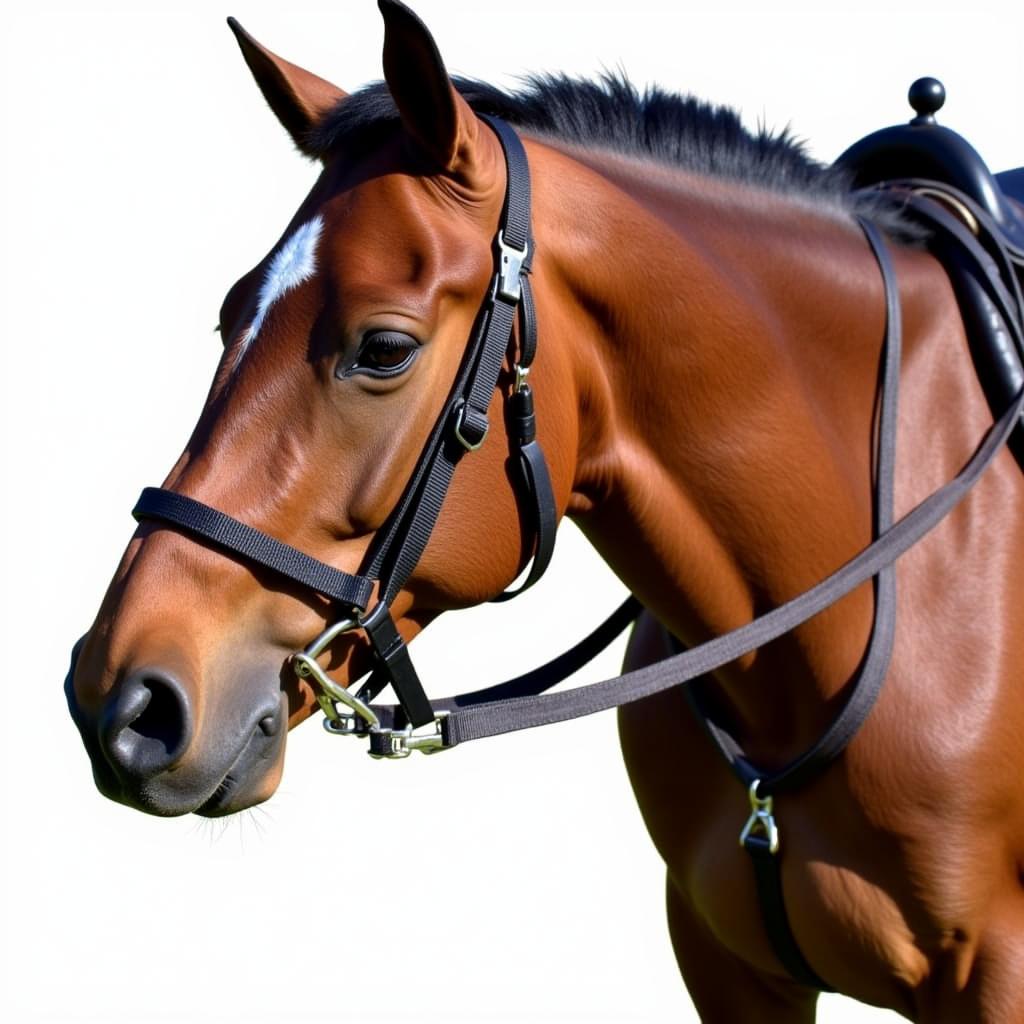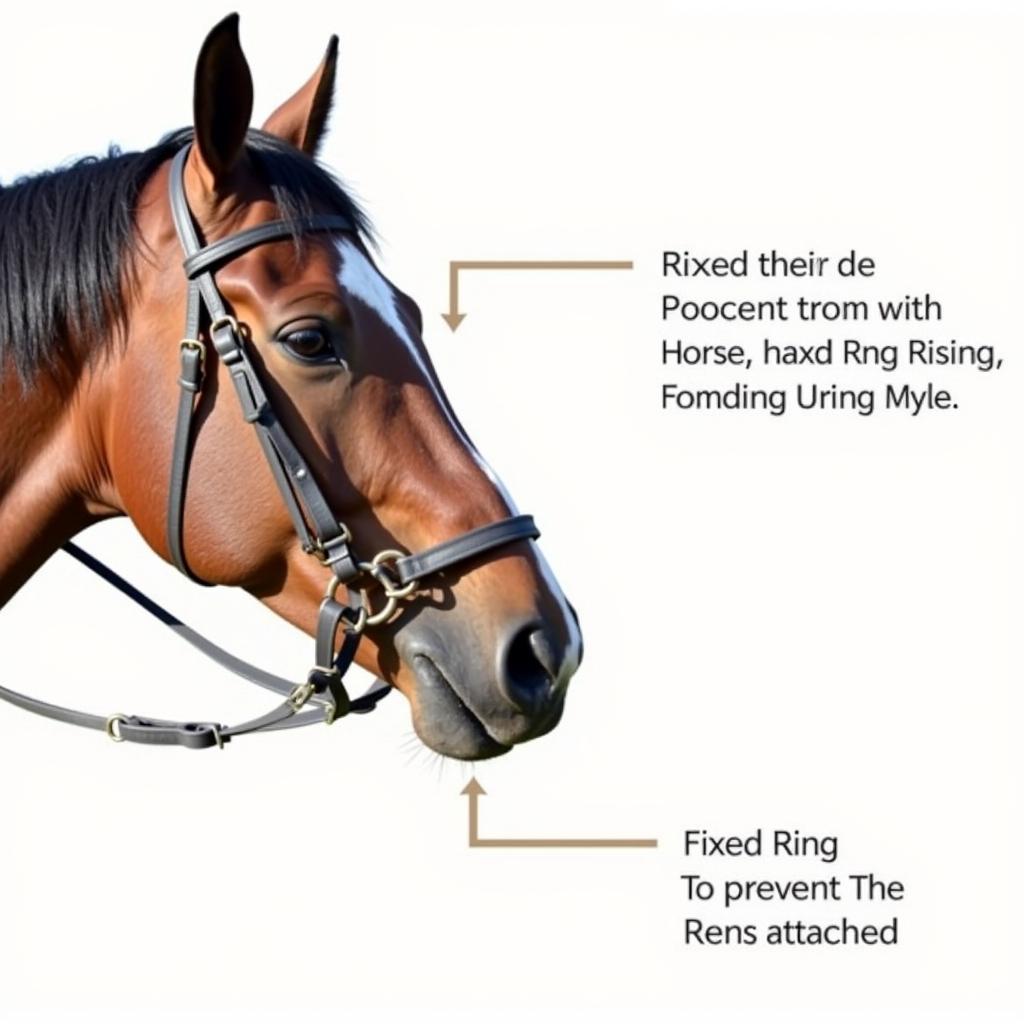Martingales are a common type of horse tack that are used to help control a horse’s head and prevent them from raising their head too high. They are often used in conjunction with a bridle and reins, and can be helpful for riders who are having trouble with their horse’s head carriage. But what exactly is a martingale, how does it work, and what are the different types?
This comprehensive guide will cover everything you need to know about martingales, from their history and purpose to the different types available and how to choose the right one for your horse. We’ll also explore the benefits and drawbacks of using martingales, and provide tips on how to use them safely and effectively.
What is a Martingale?
A martingale is a piece of horse tack that attaches to the bridle and is used to control a horse’s head carriage. It is typically made of leather or nylon and has a strap that runs from the noseband to the girth or chest strap of the saddle. The strap is usually adjustable, so you can tighten or loosen it as needed.
Why Use a Martingale?
The main purpose of a martingale is to prevent a horse from raising its head too high. This can be helpful for riders who are having trouble with their horse’s head carriage, as it can help to keep the horse’s head in a more balanced position.
Here are some specific reasons why a rider might choose to use a martingale:
- To prevent the horse from pulling back on the reins: When a horse raises its head high, it can put a lot of pressure on the rider’s hands and make it difficult to control the horse. A martingale can help to prevent this by limiting the horse’s ability to raise its head.
- To improve the rider’s balance: When a horse raises its head high, it can also throw the rider off balance. A martingale can help to improve the rider’s balance by keeping the horse’s head in a more stable position.
- To prevent the horse from rearing: A martingale can help to prevent a horse from rearing by limiting the amount of space the horse has to raise its head.
Types of Martingales
There are several different types of martingales, each with its own unique features and benefits. Here are some of the most common types:
Running Martingale
A running martingale is the most common type of martingale. It has a strap that runs from the noseband of the bridle to the girth or chest strap of the saddle. The strap is usually adjustable, so you can tighten or loosen it as needed.

Standing Martingale
A standing martingale is similar to a running martingale, but it has a fixed ring at the bottom of the strap. This ring is attached to the reins, which helps to prevent the horse from raising its head too high.

Combination Martingale
A combination martingale is a type of martingale that combines the features of a running and standing martingale. It has a strap that runs from the noseband to the girth, and it also has a fixed ring at the bottom of the strap.
Irish Martingale
An Irish martingale is a type of martingale that has a strap that runs from the noseband to the girth. The strap is then attached to two rings on either side of the saddle. This type of martingale is less common than the other types, but it is still sometimes used.
Benefits of Using a Martingale
There are several benefits to using a martingale:
- Helps to control the horse’s head carriage: Martingales can help to keep the horse’s head in a more balanced position, which can be beneficial for both the rider and the horse.
- Improves rider safety: Martingales can help to prevent the horse from raising its head too high, which can help to keep the rider safe.
- Can help to reduce the risk of injury: Martingales can help to prevent the horse from rearing, which can reduce the risk of injury for both the rider and the horse.
Drawbacks of Using a Martingale
While martingales can be helpful, they also have some potential drawbacks:
- Can be uncomfortable for the horse: If a martingale is not fitted properly, it can be uncomfortable for the horse.
- Can restrict the horse’s movement: A martingale can restrict the horse’s ability to move its head and neck freely.
- Can be dangerous if used incorrectly: If a martingale is not used properly, it can be dangerous for both the rider and the horse.
Choosing the Right Martingale
When choosing a martingale, it is important to consider the following factors:
- The horse’s breed and temperament: Some horses are more prone to raising their heads than others.
- The type of riding you do: Different types of riding will require different types of martingales.
- The horse’s size and conformation: The martingale should be fitted to the horse’s size and conformation.
“Choosing the right martingale for your horse is crucial,” says expert equestrian trainer, Sarah Thompson. “A properly fitted and appropriate martingale can enhance your horse’s performance and your safety. However, an ill-fitting or incorrectly used martingale can be harmful, so it’s essential to choose wisely and consult with a professional if needed.”
Using a Martingale Safely
Here are some tips for using a martingale safely:
- Make sure the martingale is fitted properly: The martingale should be snug but not too tight. It should not restrict the horse’s ability to breathe or move its head freely.
- Use the correct type of martingale: Choose the type of martingale that is most appropriate for your horse and the type of riding you do.
- Never use a martingale as a substitute for proper training: A martingale is not a magic solution to head carriage problems. It is important to train your horse properly to encourage them to carry their head in a balanced position.
- Don’t use a martingale on a horse that is not used to wearing it: Introduce the martingale gradually and allow the horse to get used to it before riding.
When to Avoid Using a Martingale
There are some situations where it is not recommended to use a martingale:
- On young horses: Young horses are still developing their head carriage and may not be able to handle the pressure of a martingale.
- On horses with head injuries: Martingales can put pressure on the horse’s head, so they should not be used on horses with head injuries.
- On horses with respiratory problems: A martingale can restrict the horse’s ability to breathe, so it should not be used on horses with respiratory problems.
Conclusion
Martingales can be a valuable tool for horse owners, but it is important to choose the right type, use it safely, and avoid using it on horses who may not be suitable candidates. With a little research and care, you can choose the right martingale for your horse and enjoy all the benefits it has to offer.
FAQ
Q: How do I know if my horse needs a martingale?
A: If you are having trouble with your horse’s head carriage, or if your horse is prone to raising its head high, then a martingale may be a good option for you.
Q: What is the difference between a running martingale and a standing martingale?
A: A running martingale has an adjustable strap that runs from the noseband to the girth, while a standing martingale has a fixed ring at the bottom of the strap that attaches to the reins.
Q: How do I fit a martingale?
A: The martingale should be snug but not too tight. It should not restrict the horse’s ability to breathe or move its head freely.
Q: Is it safe to use a martingale on a horse that is not used to wearing it?
A: It’s best to introduce the martingale gradually and allow the horse to get used to it before riding.
Q: Can I use a martingale for every type of riding?
A: Not necessarily. Different types of riding require different types of martingales.
Q: Can I use a martingale on a horse that is prone to rearing?
A: Yes, a martingale can be helpful in preventing rearing. However, it is not a guarantee against rearing, and it is important to use it in conjunction with proper training.
Q: Where can I buy a martingale?
A: Martingales can be purchased from a variety of equestrian retailers, both online and in-store.
Call to Action
If you need help choosing the right martingale for your horse or have any questions about using martingales safely, please contact us at [Phone number] or [Email address]. Our team of experts is available 24/7 to help you. We also offer a wide selection of martingales and other equestrian equipment at our store located at [Address].